Editor’s Note: Today’s guest feature is our contributor Greg Moats.
In 1960, I visited what is now the Buffalo Bill Center of the West and stood at the end of the Whitney Western Art Museum wing (it was the only wing in the building at the time) looking out at the statue of “The Scout.” In front of the window was a glass encased Winchester 73. As an eight year old, I had a pretty limited understanding of the afterlife in general and heaven in specific, but I was pretty sure that heaven was something like this setting! 59 years later I still court that feeling! That view and the museum in general sparked a passion for western history, art and firearms that I still possess to this day.
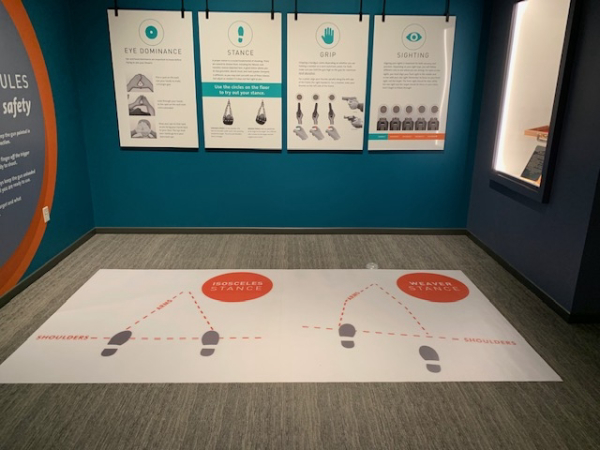
Today, the Buffalo Bill Center of the West (BBCW) is composed of five separate “wings” or museums: The Whitney Western Art Museum, The Buffalo Bill Museum, The Plains Indian Museum, The Draper Natural History Museum and The Cody Firearms Museum (CFM). Each Museum has its own staff, advisory board and curator.
The term “museum curator” usually doesn’t conjure an image of youth and enthusiasm. However, when you combine youth and enthusiasm with an encyclopedic knowledge, you have a good picture of the CFM’s curator, Ashley Hlebinsky. If her name sounds familiar, you may have seen her on the Travel Channel’s “Mysteries at the Museum,” the Discovery Channel series, “Master of Arms,” or on the Outdoor Channel’s “Gun Stories with Joe Mantegna.” Add to that mix that she is the President of The Gun Code, LLC a consulting company through which she serves as a museum advisor, expert court witness, writer, instructor, lecturer and television producer and you can tell that she is a savant at prioritizing and organizing combined with a touch of professional juggler with a high energy level!
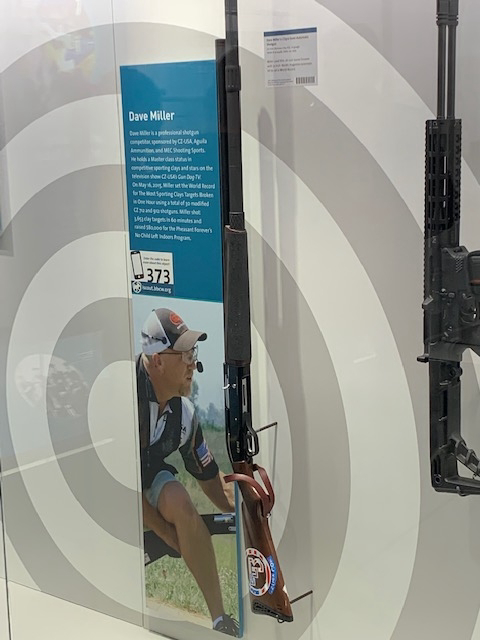
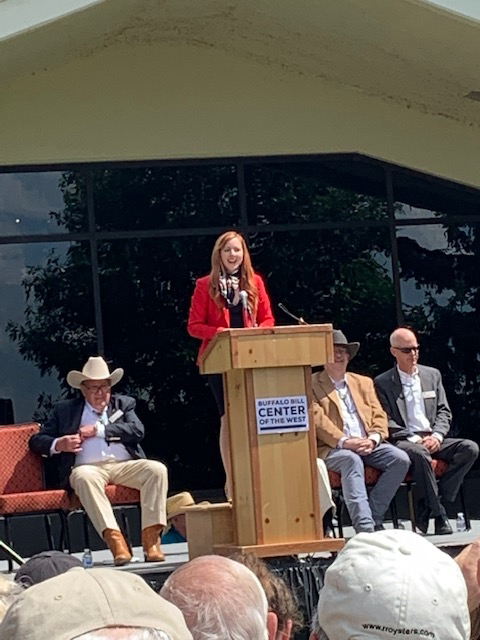
Ashley recently oversaw a total renovation of the museum that was 6 years in the planning and one year in execution at a cost of over $12 million. They virtually gutted and re-built the entire museum. Why did they feel the need to change what was already the nation’s most comprehensive assemblage and display of firearms?
George Dillman of Wyoming Armory Precision Firearms is on the Board of Trustees of the BBCW and the advisory board of the CFM. According to George, one of the objectives of the renovation was to make the firearms museum more of a hands-on experience, especially for the non-gun enthusiast who would often leave the museum numbed by sensory overload. “Sure were a lot of guns,” was a typical comment when asked for feedback as they exited the building. To enhance the hands-on experience, visitors to the museum can now shoot the Steel Challenge events, sight in scoped rifles at various yardages as well as shoot doubles-trap on sophisticated video equipment situated among various firearm displays spread throughout the museum.
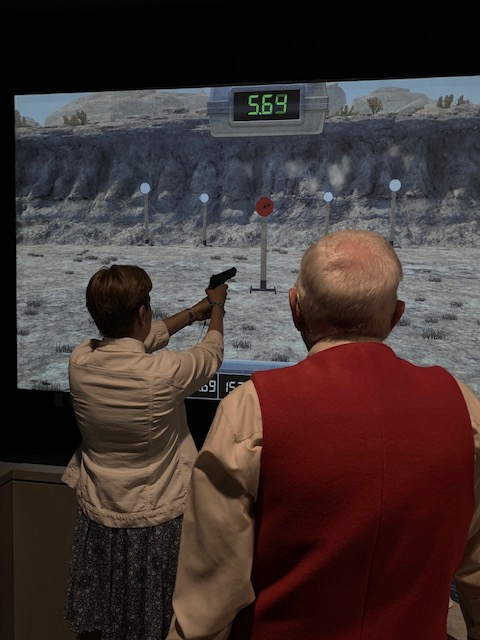
Appealing to the younger crowd, visitors can physically manipulate a bolt action rifle, a lever action rifle, a break-open shotgun and even run the slide on a Glock all of which are permanently attached to a long kiosk. There is even a .50 BMG M2 (“Ma Deuce”) on which visitors can toggle the butterfly trigger! Also visitors can get a visual assist to experience the difference between the Weaver and Isosceles stance by standing on the footprints and aligning their shoulders and arms with lines laid out on a mat on the floor.
The CFM now houses 10,675 artifacts on display dating back to the 1200’s. The displays are not a random accumulation of guns, each exhibit manifests some element of historical significance due to either innovation, scarcity or provenance. Ernest Hemingway’s Winchester Model 21, Theodore Roosevelt’s “Big Medicine” Winchester 1895 and guns of numerous other US Presidents grace the halls as do the tools of exhibition shooters and competitors of note. Cinematic celebrity-guns dating back to Gary Cooper’s Colt Single Action Army right up to Robert Taylor’s 1911 used on the Longmire series are on display. Matt Dillon, Paladin and the Cartwrights’ sidearms are on display (if those names are unfamiliar you’re either very young or suffered a mis-spent youth).
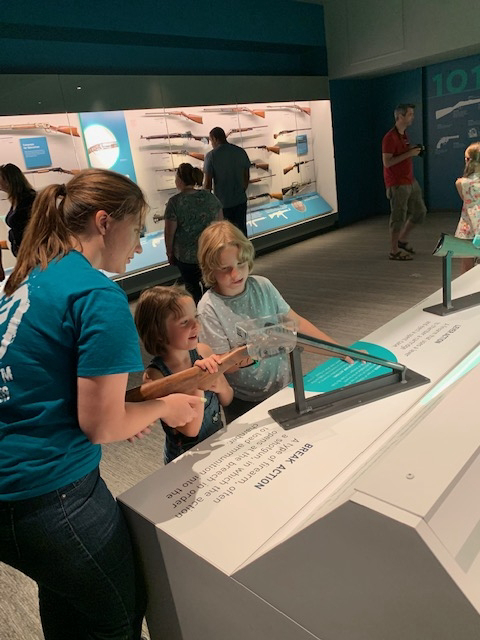
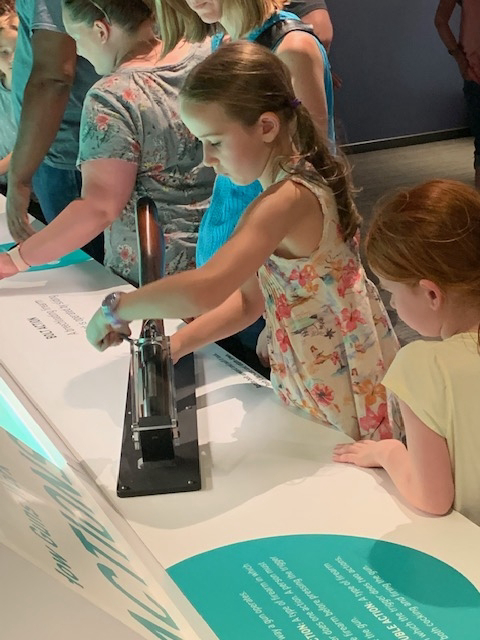
They’ve added a military section to the museum with a series of long vertical and horizontal file drawers (think “library card catalog” on steroids) with each drawer labeled with a specific war or conflict and the nationalities of combatants involved. Pull out one of the vertical drawers and you’ll find the “long guns” mounted under plexiglass that were used by that nation in that war. Horizontal drawers are similar but generally hold the sidearms of the country and conflict labeled. Veterans’ recorded remembrances of their service are available on a touch-screen to add a personal, emotional context to the museum experience.
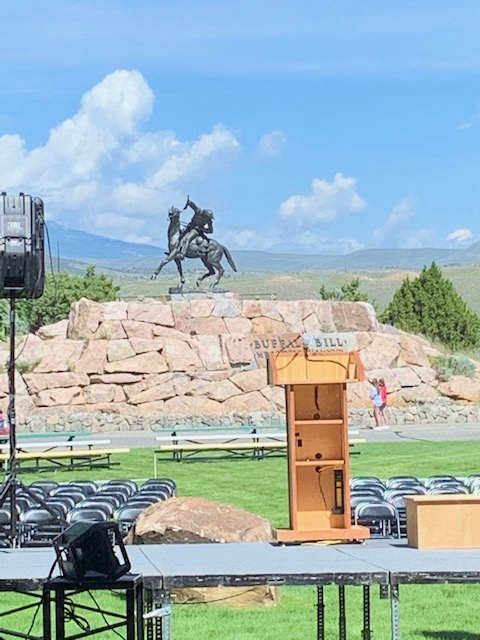
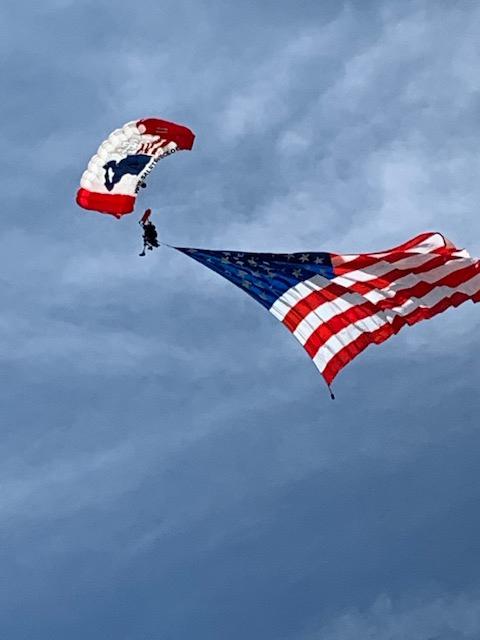
The grand re-opening of the museum took place on July 6th, with an official ribbon-cutting prefaced by a courtyard welcoming ceremony conducted by some of the Trustees and Ashley Hlebinsky. The Buffalo Bill Center of the West hasn’t achieved its lofty status without a rigid commitment to decorum. A Douglas C-47 just back from France and a D-Day commemoration ceremony conducted a multi-pass “fly-by.” On the C-47’s last pass over the museum, Dana Bowman a retired Special Forces soldier and Golden Knight parachutist performed a precision jump from the WWII aircraft, landing on the grass lawn near the bleachers with an immense American flag. Having lost both of his legs in a tragic free-falling accident, Bowman holds the distinction of being the first double amputee to re-enlist in the United States Army. We in the gun-culture tend to be a patriotic lot, you’d be hard pressed to find a national-anthem-kneeler in our ranks and the site of the huge American flag being borne by the double-amputee parachutist was…..well….inspiring. It was the perfect aperitif to set the scene for entering the new museum. The pageantry was as masterfully executed as the museum renovation itself was.
The Cody Firearms Museum is truly the epicenter of American gun-culture; if it has a trigger and historical significance, you’ll find it at the CFM. Today’s political landscape has some dark clouds on the horizon for the 2nd Amendment and American traditions and values in general. Our domestic enemies have never been as strident and bizarrely illogical as they are currently. The gun-culture needs to be infused with knowledge, enthusiasm; a trip to the Cody Firearms Museum can help to bolster both.
- Greg Moats
Greg Moats was one of the original IPSC Section Coordinators appointed by Jeff Cooper shortly after its inception at the Columbia Conference. In the early 1980’s, he worked briefly for Bianchi Gunleather and wrote for American Handgunner and Guns. He served as a reserve police officer in a firearms training role and was a Marine Corps Infantry Officer in the mid-1970’s. He claims neither snake-eater nor Serpico status but is a self-proclaimed “training junkie.”